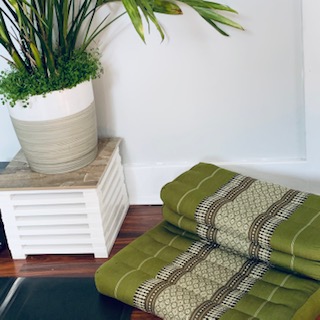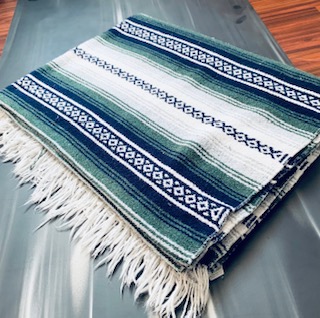How to Meditate
- tracymartorana4
- Nov 4, 2022
- 5 min read
Updated: Nov 10, 2022
In this post I will teach you how to meditate. Meditation is a simple practice that everyone can do. Making a short meditation part of your daily routine will have huge positive results to most aspects of your life. Seriously.

I have had the privilege of teaching hundreds of people to meditate; and it really truly is a privilege. There is a natural high I get, each time I can dispel some of the misunderstandings that people have about meditation and show them how simple meditation can be.
Meditation is a practice that everyone can (and dare I say, should) do. Keep reading to learn all you need to know to get started today! (or jump to the bottom and watch the video)
Benefits of Meditation
You are probably wondering why I think everyone should meditate, right? Well let me give you a few reasons:
Reduces stress
Lowers high blood pressure
Relieves anxiety
Helps manage depression
Increases self-awareness and self-love
Increases tolerance
Strengthens the immune system
Builds mental focus
Nurtures a sense of connection to others and to the divine
There are so many benefits from meditation. And, if you still aren't convinced, check out this article.
What is Meditation?
Ask 5 people to define meditation and you will get 5 different answers. However, they are probably all correct. It's not an easy practice to define in just a few words. I think of meditation as a practice that involves relaxation and awareness. Other ways to define it could be...
Mindfulness
Training your awareness
Sitting with focused attention
To engage in contemplation
Being open
Taking charge of the mind
What Meditation is NOT
Just as important as knowing what meditation is, is knowing what it is not.
Tuning out / trance
Stopping thoughts ***
A religious experience (although it can be for some people, in some situations)
A serious or complicated process (although many people make it this)
*** this is the biggest misconception about meditation. As long as you are alive you will have thoughts. When you sit in meditation, you simply learn not to follow them and you also realize how weird your thoughts are.
Types of Meditation
Just like the definition of meditation, you can find many ways to breakdown meditations into types. However, I like to keep things simple. I think of meditation falling into these basic categories, but there is some overlap and there are lots of variations within each category.
Breathing meditation - the sole focus is on the breath. It may be regular breathing, but it is often an unusual breathing rhythm that requires your focus (ex. inhale to a count of 4, exhale to a count of 8)
Mindfulness meditation - this can also include noticing the breath, but the focus is also on something else (ex. sensations, a mantra, music)
Visualization - just like it sounds, this is using your imagination to visualize yourself somewhere else (ex. visualizing yourself meditating on a beach or walking in the woods)
Movement - similar to mindfulness, but done in movement vs seated (ex. qigong, yoga, walking)
And all of these can also be done guided or on your own. Guided meditations are great, but it is also important for you to be able to meditate by yourself with no tools.
Finally, How to Meditate
First, decide on the type of meditation you want to do. For beginners, I recommend just focusing on your breath, counting your inhales and your exhales.
Get yourself into a comfortable seated position. You do not need to be sitting on the floor, I often sit in a chair or on the foot of by bed. You can meditate lying down or in a restorative yoga pose, but keep in mind you are much more likely to fall asleep. Wherever you are, you simply want to be comfortable, with your spine straight.
Close your eyes, or just soften your gaze. Take a big breath in, and as you exhale, relax your body (especially the places we tend to hold tension - face, shoulders, stomach). With your next exhale, allow your mind to calm. Remember, you will have thoughts, and that is okay. As you sit, just try not to follow the noisy mind. Instead, sort of ignore the thoughts and bring your awareness to whatever you are focusing on (your breath, the sounds of the room, the visualization).
If you are doing the simple breathing meditation I recommend, after those initial relaxing breaths, let your breath return to it's normal cadence, counting each inhale and exhale (inhale 1, exhale 2, inhale 3...) until you get to 10 and then start back at 1. Then just sit... relax... and pay attention to the breath and the counting.
When you are done, take a big cleansing breath, slowly open your eyes, gently stretch and slowly move back to your day. Simple. (but you may find that it's not that easy)
How Long Should I Meditate?
Good question. Most meditation gurus will say you need to meditate 20 minutes, twice a day. That's a lot! Like I said above, meditation is simple, but it's not easy. Especially in the internet age, with our short attention spans and so many distractions! The best piece of advice I can offer is to start slow and build up. If you try to start with a 20 minute meditation, you will likely give up. Start with 1-2 minutes. If you worry that you might fall asleep, set at timer. You might never meditate 20 minutes twice a day and that is perfectly fine. Even just a few minutes a day will have a significant positive impact on you.
When Should I Meditate?
The most common answer is first thing in the morning and right before bed. So, if one of those times works for you, have at it! The idea is that in the morning your mind is still fresh and still closely connected to sleep (and in some ways meditation and sleep are very similar). It can also be practical to meditate early in the day, before your day gets away from you and your plans to meditate get derailed. Right before bed is nice, as it allows you unwind, process the day and prepare for sleep.
However, for many people, these times don't work. In reality, any time is a good time to meditate. I like to meditate in the morning, but I am also a big fan of taking mini meditation breaks throughout my day; meditating for a few minute here and there, whenever I need to calm down or focus my energy.
Meditation Tools
Comfortable clothes and a comfortable place to sit are all you really need. However, if you are like me and like options, you may want to consider purchasing a meditation cushion or a yoga bolster and blanket. In the morning I often use a 2 tiered meditation cushion to meditate after a short yoga session. Sometimes, I prefer a bolster and blanket to meditate in a restorative pose. Other times, I just sit where I am.
Now what about music, timers and guided meditations? There are also some great meditation apps for your phone. Whether you just want a timer, some pleasant background noise or a guided meditation, my 2 favorites are Insight Timer and Calm. You can also search Spotify or YouTube for relaxing music and guided meditations. (note, I will be adding guided meditations to my YouTube channel, so please subscribe)!!
Shopping
This post contains affiliate links, which means I make a small commission at no extra cost to you.
I have included links below in case you are looking to purchase a cushion or bolster. Again, these are not necessary, but can add a little something special to your meditation practice.
My book, 90 Days to Holistic Wellness: https://amzn.to/3ftUQwT
This cushion raises your hips while providing a soft landing place for your legs: https://amzn.to/3Fz6Vvo
A yoga bolster like this is great for meditation and restorative yoga poses: https://amzn.to/3NxyS96
A simple yoga blanket can help with seated and reclined positions: https://amzn.to/3TZBXB6
Watch It Here
Pin It For Later















Comments